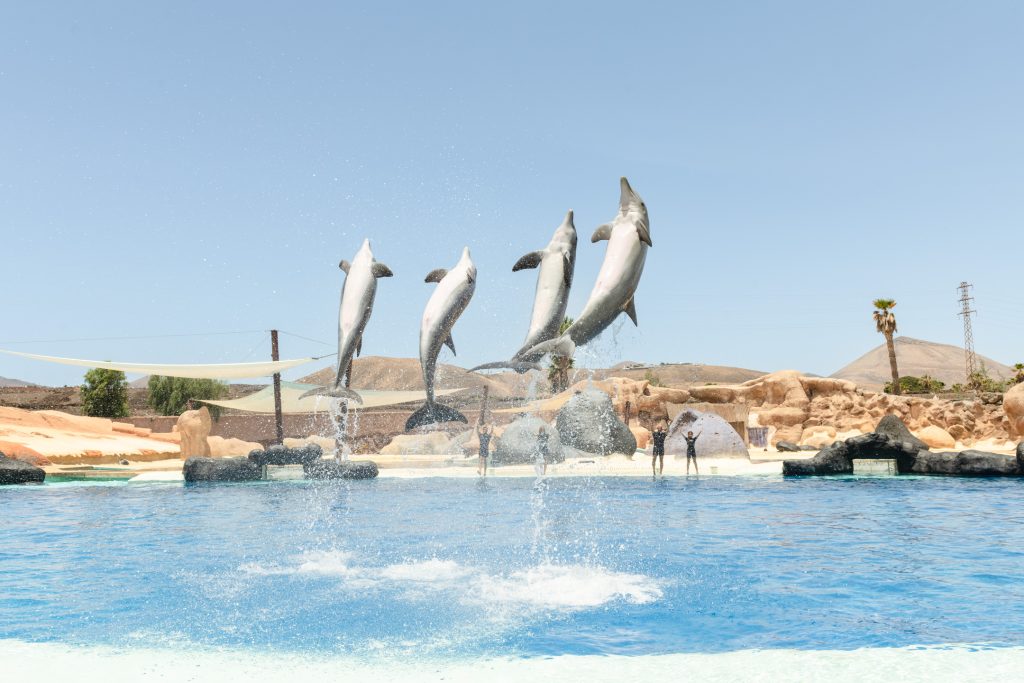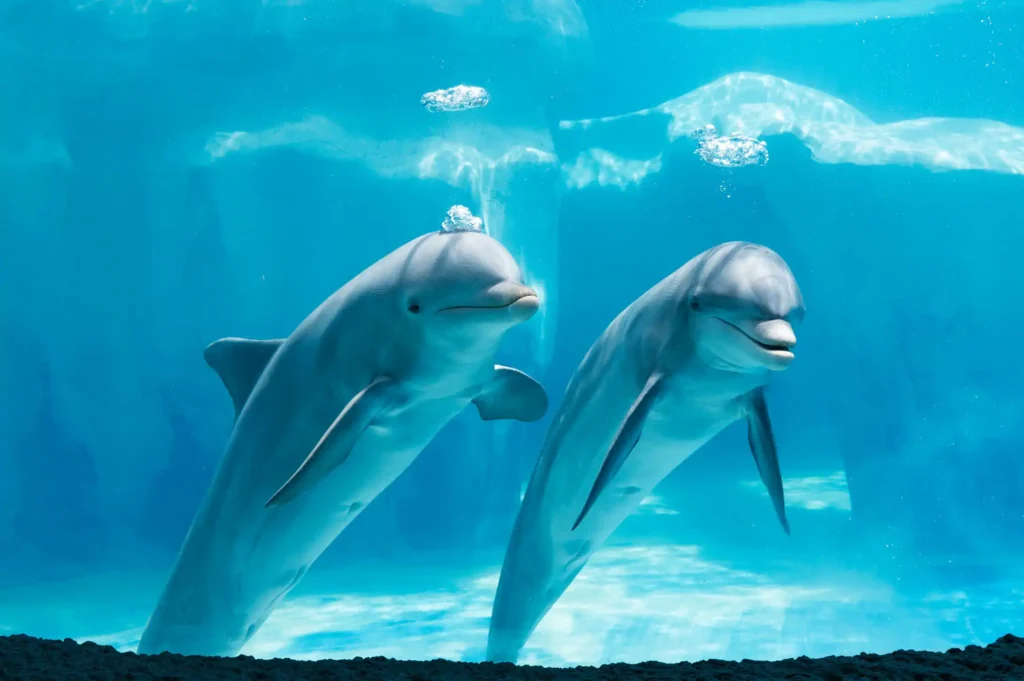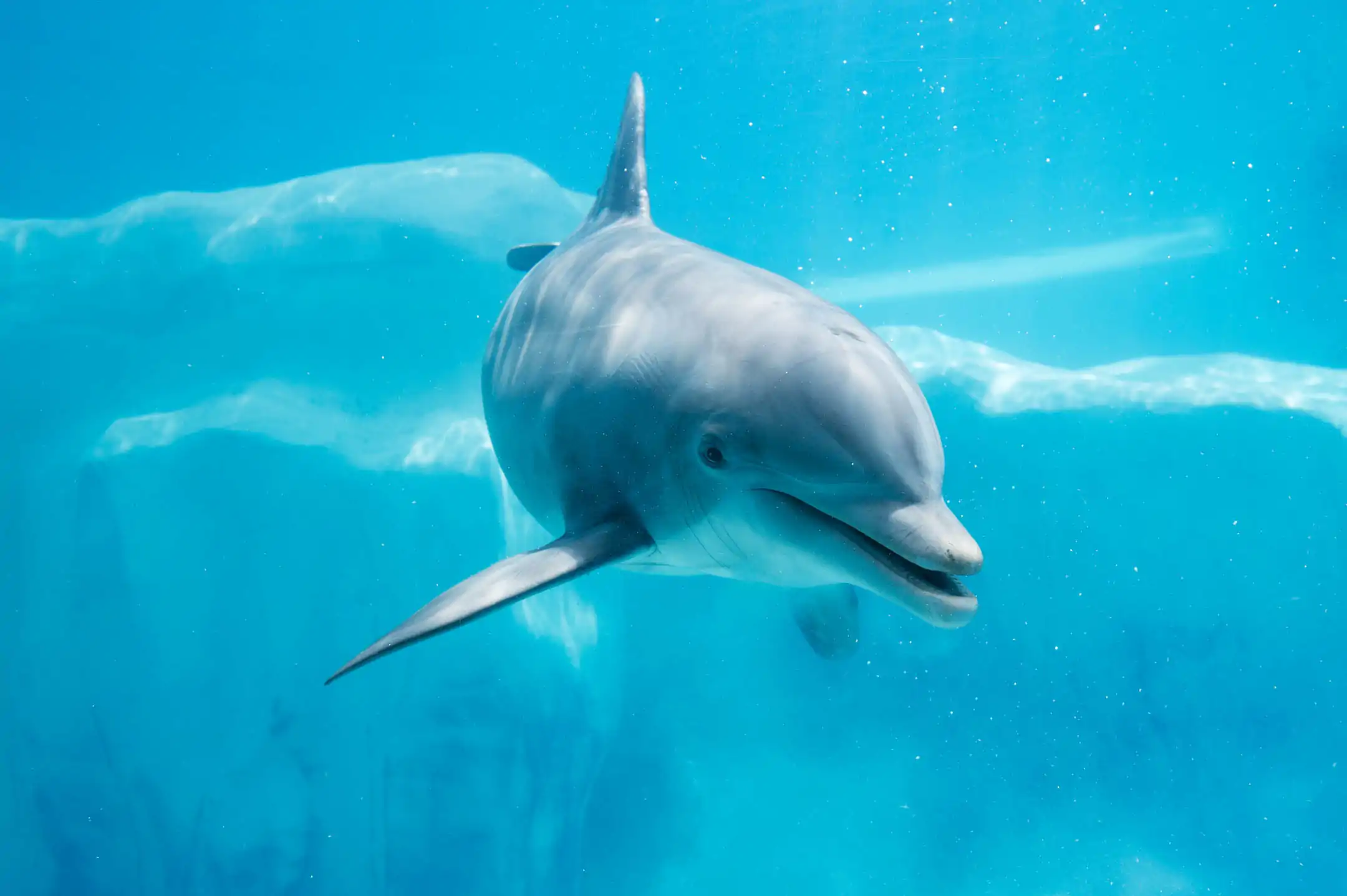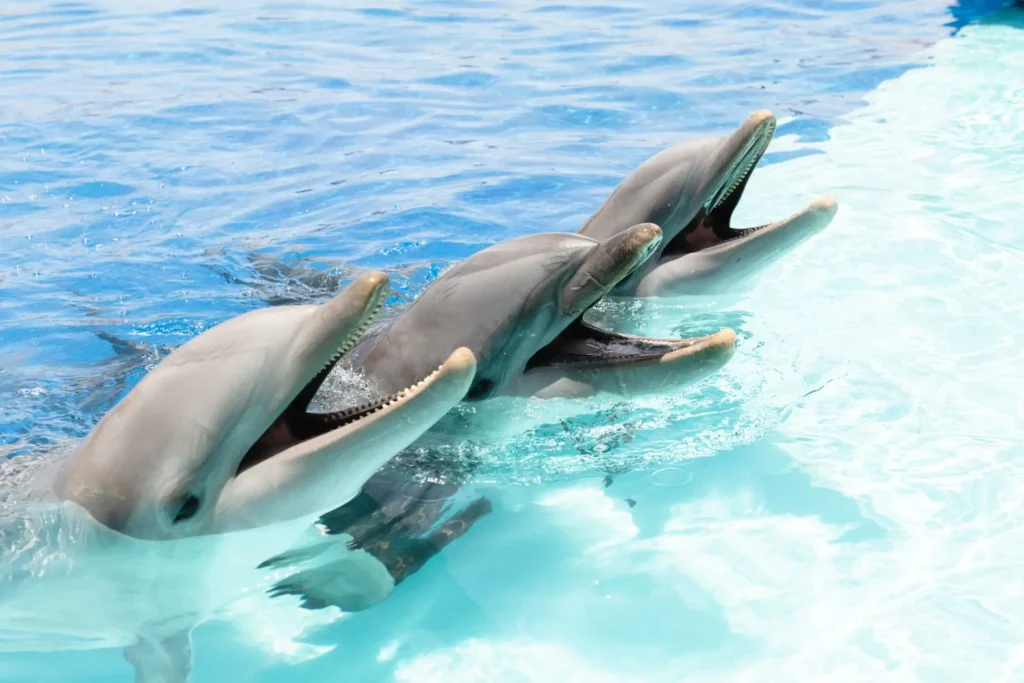Bottlenose dolphin is the most common species of cetaceans in the world, with an estimated global population over 750,000 individuals.
Physical features
Dolphins like other cetaceans such as orcas, sperm whales or porpoises are grouped together in the suborder odontoceti, as they all have teeth and, in the case of the bottlenose dolphin, they have between 20 and 26 pairs.
All odontoceti have the particular feature of using echolocation to find their prey or scan the sea-floor topography.
We may distinguish two different ecotypes of bottlenose dolphin, a coastal form, smaller and of lighter colours and an offshore form, darker with larger and stronger bodies.
These animals may be up to 3.8 metres long and weight up to 500 kg. Males are generally larger than females. Both types cohabitate in our park, with weights of up to 200kg average and lengths between 2 and 3 metres.
Habitat
This marine mammal lives in temperate waters worldwide, being found in the Atlantic and Pacific Oceans and the Mediterranean Sea, always waters with temperatures ranging from 10º to 32ºC. They rapidly adapt to different environments.
Coastal ecotype lives in continental coastal areas forming small groups of 2 to 15 individuals, with offshore dolphins living in groups of several dozens or hundreds.
Feeding
As with their habitat, diet also varies depending on the ecotypes, with coastal dolphins mainly feeding on coastal fish and sea-bottom invertebrates, although they have also learned to live from the human fishing activities and feeding on discarded fish. On the contrary, offshore dolphins feed on pelagic or mesopelagic fish, having found fish that live at depths of up to 500 m. in its stomach.
These animals use their agility and intelligence to employ different hunting techniques such as working together to trap fish schools against the shore or slapping their tails against the surface of the water in order to stunt fish and then eat them.
Reproduction
Bottlenose dolphins may mate at any time of the year, although they rarely mate during winter since their gestation period lasts one year and it is unusual to have new-borns during the cold months.
Cetaceans are mammals and therefore, their calves feed on their mother’s milk. Dolphins are weaned at between 18 and 20 months but remain with their mothers for several years.
Status and conservation
Global population of this species is ranked as of “least concern”, although it is true that such position should not allow us lower our guard since some populations such as the Mediterranean Sea population or even further, the subspecies inhabiting the Black Sea, which is in a vulnerable status due to the conflicts with fishermen, the destruction of their habitat by pollution or the hunting of these animals for human consumption or for using as bait, as is the case in Venezuela, Chile, Sri Lanka, the Antilles, Philippines, etc.





